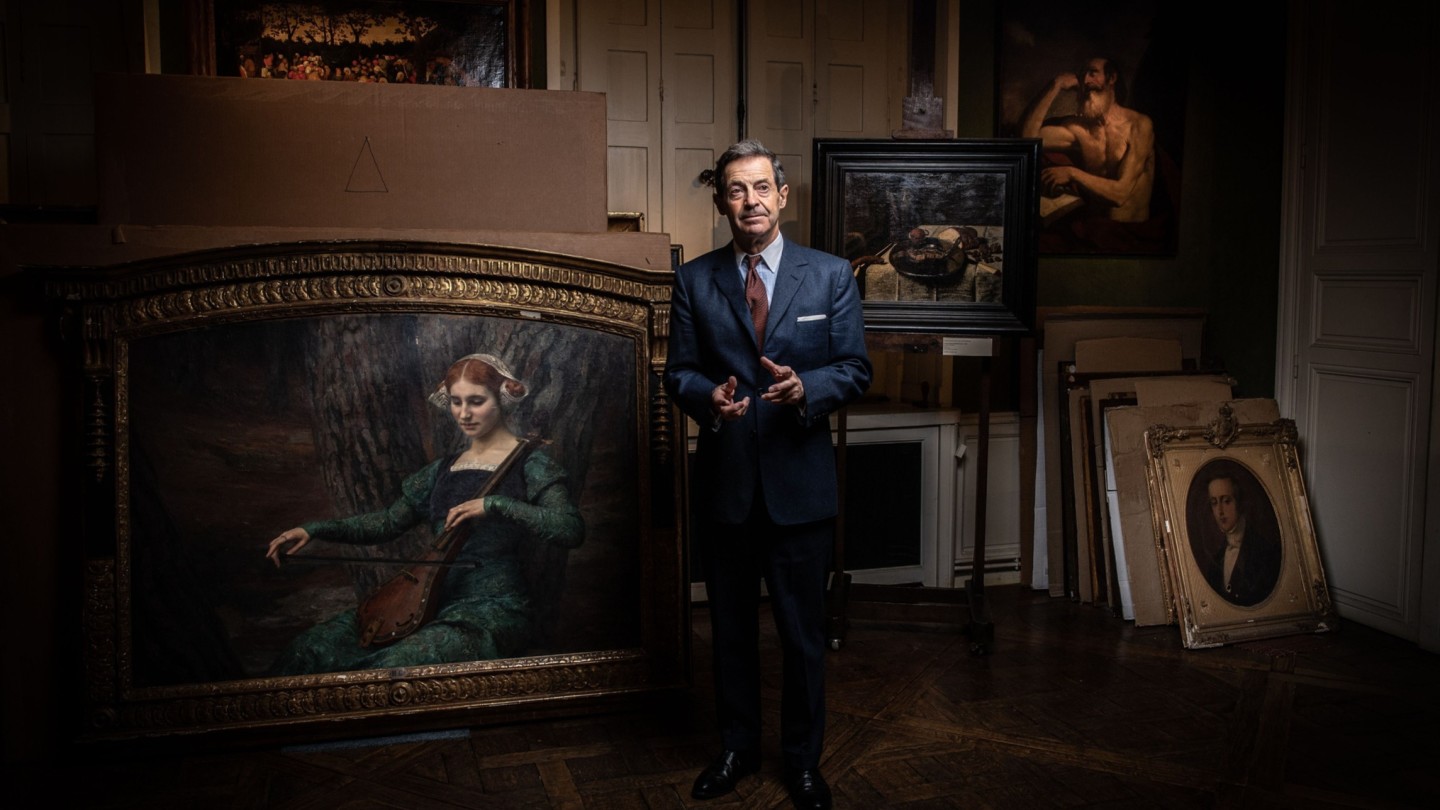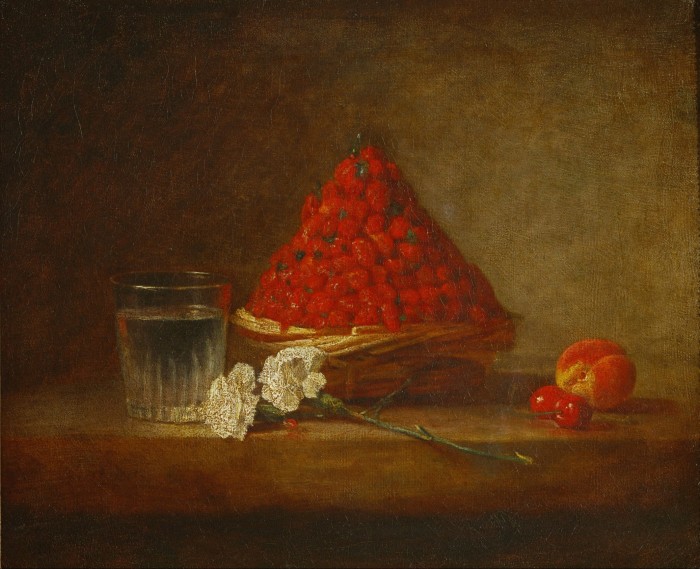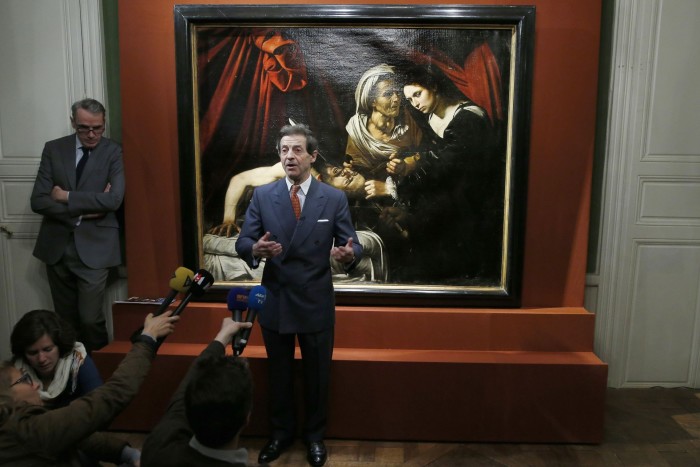An art sleuth on the hunt for lost masterpieces

Roula Khalaf, Editor of the FT, selects her favourite stories in this weekly newsletter.
In the grand Parisian office of art appraiser Eric Turquin, paintings are not just spread on the walls but litter the floors of the reception rooms, the offices, the corridors, the smallest of storage rooms. The profusion well reflects the man and the image he seeks to project: Old Master expert, art sleuth, storyteller.
His recent trophies include a portrait of an old man by Fragonard, not seen publicly since the 18th century and found in the Champagne region by a local auctioneer assessing an inheritance. It sold in 2021 for €7.7mn. Another is an exquisite gothic Virgin and Child from Bohemia, presented to Turquin by an auctioneer from eastern France and bought by the Metropolitan Museum for €6.2mn in 2019. Two others appraised by Turquin have attracted the Louvre’s attention.
Turquin says more than 10,000 paintings are presented to him annually for appraisal, first as photographs (he has a look at all of them). Then, about a third are brought in his office for further investigation. For his appraisal, Eric Turquin earns 5 per cent of the sale price, which will soon rise to 6 per cent. “Constant observation of paintings, building connoisseurship: that is the basis for our trade,” says Turquin, 72. “But when you have an intuition, it must be confirmed by historical research and forensic examination.”
This thorough detective work and his multiple successes have made him a clear leader in Old Master expertise in France. A diminutive, stylishly dressed figure who speaks in rapid-fire sentences, he is described by one of his collaborators as “a tireless electric battery”. He is also a passionate hunter of live game — as well as lost treasures.

From 1979 to 1987, Turquin worked for Sotheby’s in London, where he became head of the Old Masters department. “My time was consumed by meetings and administration,” he says. “I could not bear it.” Instead, he decided to launch his career as an independent expert in Paris, where he put together a carefully selected team of a dozen people, including two other experts and three archivists, for what he calls his “research laboratory”.
“Four hundred of France’s 660 auctioneers form his main clientele and each time they find a painting in an inventory they ask for his opinion,” says Jean-Pierre Cuzin, former head of the Louvre’s European paintings department who joined Turquin after leaving the museum. “Two or three times a month, our team screens about 130 works,” says expert Stéphane Pinta, whose calm balances Turquin’s effervescence. “Fine ones, ugly ones, silly ones, and everyone is free to give his or her opinion,” adds Cuzin.
Turquin has had his share of controversy and legal wrangles, understandably proportionate to the volume of his business. In 2022, New York dealer Adam Williams was the successful bidder, on behalf of a client, at Artcurial in Paris for a basket of wild strawberries painted in 1761 by Chardin, which Turquin had appraised. The €24.4mn price tag was a record for the artist. A record (for a pre-1500 painting) was also set for a panel depicting the mocking of Christ, by Cimabue, which had been found hanging in the corridor of a manor house in the northern town of Compiègne. It was sold in 2019, after Turquin’s authentication, most likely to collector Álvaro Saieh for €24.1mn. In both cases, the Louvre blocked the works from being exported; it has now acquired the Cimabue and intends to buy the Chardin.
These stratospheric prices raised the eyebrows of some experts and curators, who wondered if the Louvre, which already owns Cimabue’s monumental “Maestà” and no fewer than 40 Chardin paintings, really needed to pay €50mn for such a small work by the Florentine master and a still life that went unnoticed at the 1761 Salon. Sources from the museum’s administration blamed Turquin for inflating prices by going straight to auction, rather than giving them a first option. But Turquin says this was “due process to establish a fair price for the clients” in their dealings with the Louvre.

Despite his string of successes, Turquin’s view is not always universally accepted. In 2014 one of his auctioneer clients in Toulouse found a large painting rolled in an attic which Turquin attributed to Caravaggio. Scholars were not all convinced. Some considered it might be a work by a Flemish follower, Louis Finson. The Louvre declined to buy it, a “major disappointment”, says Turquin. He nevertheless estimated it at €100mn-€150mn, cataloguing it as a true Caravaggio.
Even after a worldwide media campaign, on the day of its auction in Toulouse in 2019 there were no bids, says Turquin. He and the auctioneer withdrew it at the last minute and sold it privately to New York hedge-fund billionaire, collector and Metropolitan Museum board member Tom Hill. At the time, the auctioneer announced that the painting would soon be exhibited in a major museum, but it has not been publicly seen since. Nonetheless, the media frenzy over “the new Caravaggio” catapulted Turquin into the international spotlight, sealed his reputation and, in doing so, fed the fantasies of those hoping to find a fortune hidden in their homes.

Comments